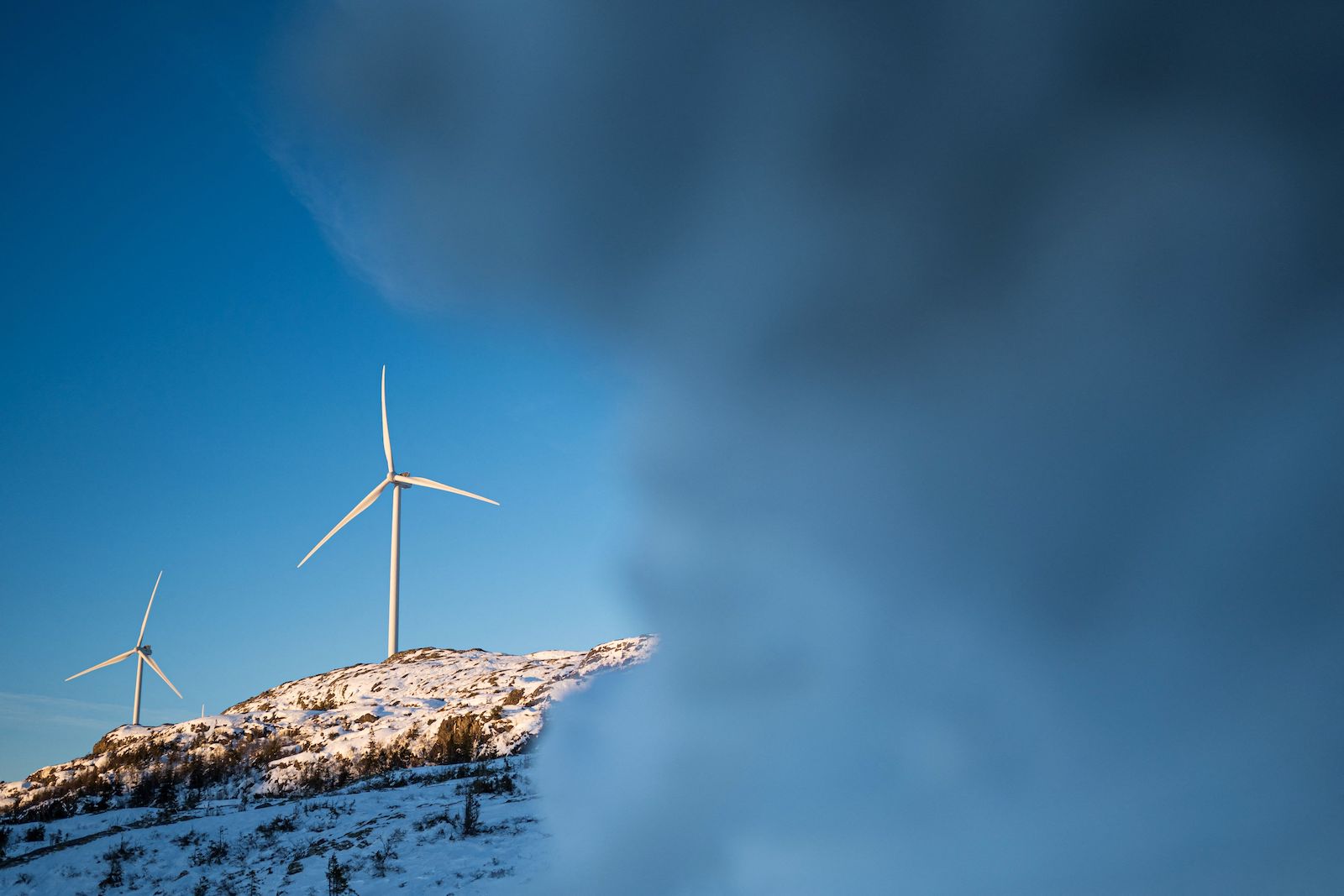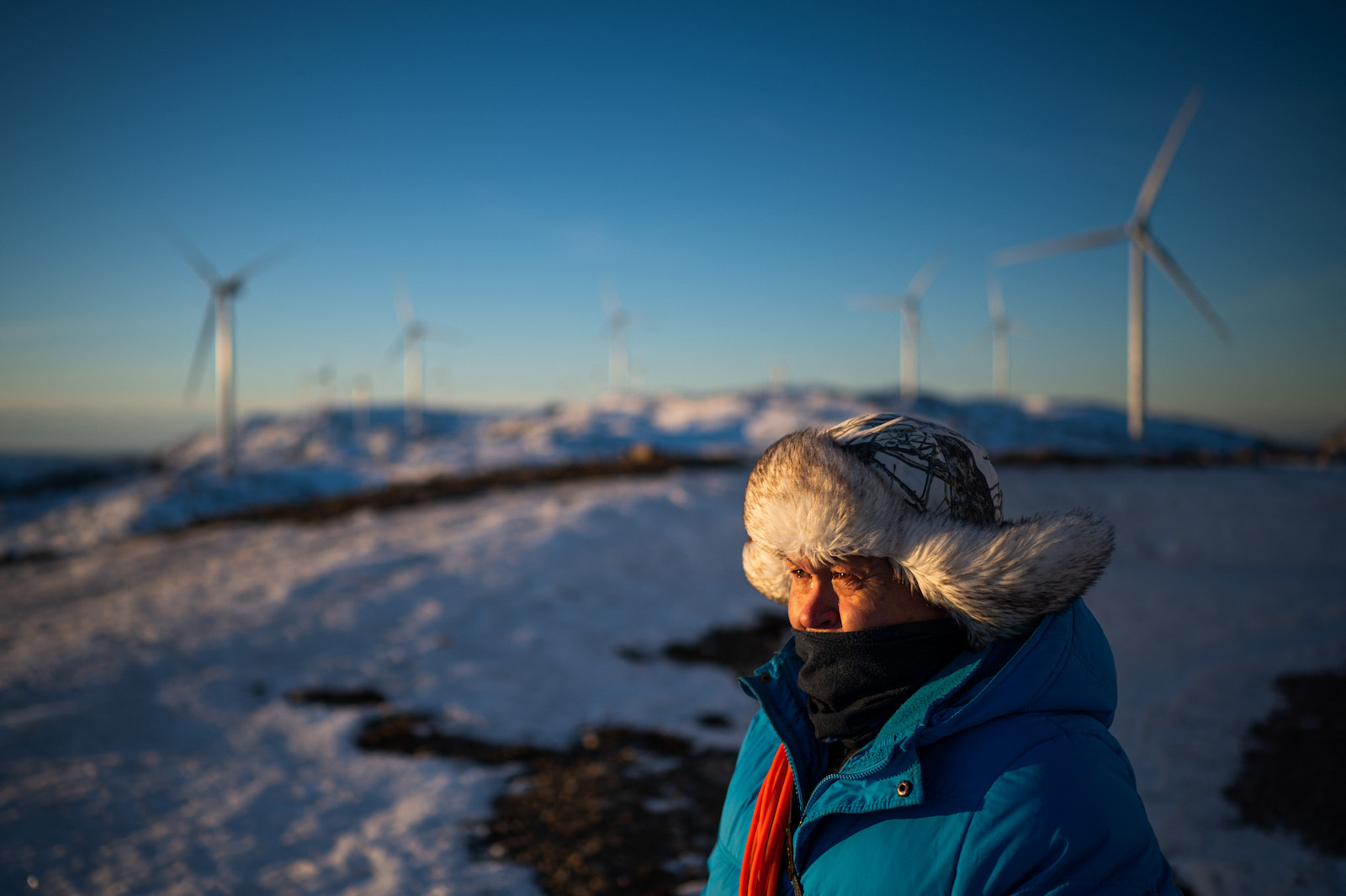In October 2021, Norway’s Supreme Court ruled that a wind farm built on the country’s central-west coast violated the protected cultural rights of the Indigenous Sámi by infringing on their reindeer grazing lands. On June 3, 2023, exactly 600 days after the ruling, the $1.3 billion Fosen wind farm was still operating. To mark the anniversary of the court’s decision, members of the Norwegian Sámi Association’s Youth Committee, known as NSR-N, demonstrated outside the Norwegian Parliament. On June 26, Motvind Norge, an organization that opposes wind power on conservation grounds, blocked the entrance to the wind farm in Fosen, shutting down the facility for a week.
Police successfully cleared the protestors, fining many of them. Meanwhile, there is no sign the government or the company behind the wind farm will take action to comply with the court’s decision, or respond to the demands of Sámi leaders to remove the wind farm entirely. As the court ruling’s second anniversary approaches, organizers with NSR-N say they will intensify their protests if the government fails to take action.
The civil disobedience began in February of this year, when 13 Sámi youth from NSR-N began occupying the Ministry of Petroleum and Energy in Norway’s capital, Oslo, to mark 500 days since the Supreme Court ruling. Within a week, they were joined by nearly 200 human rights campaigners, including members of Young Friends of the Earth, the largest environmentalist youth organization in Norway, and Swedish climate activist Greta Thunberg. By the end of the protests, 10 ministries were shut down, and 2,000 supporters joined NSR-N organizers as they ended the peaceful occupation at Norway’s royal palace. In response to the February protests, Terje Aasland, the minister of petroleum and energy, offered Sámi reindeer herders an apology.

“The licensing decisions entail a violation of human rights,” wrote Aasland at the time. “The reindeer-herding Sámi at Fosen have been in a demanding and unclear situation for a long time. I’m sorry for that.”
The Fosen wind farm, Norway’s largest wind project, has faced resistance from Sámi reindeer herders and human rights advocates since it was greenlit in 2010. Built near the city of Trondheim, the farm is located in Sápmi, the traditional homelands of the Sámi people that stretch from Norway across Sweden and into Finland and Russia. The turbines were built on legally recognized reindeer herding districts that two Sámi communities, known as siidas, need access to for survival.
“My mood, my state of mind, my personal life, my professional life: Everything has been affected in a negative way by wind power,” said Terje Haugen, a reindeer herder affected by the Fosen wind farm. “I still have reindeer, but they don’t want to go near the wind turbines and have separated into smaller herds and spread along the coast. It’s a big problem that they have scattered into small flocks, it makes it very difficult to keep track of them.”
Appeals from the Sámi prior to construction went ignored. Reindeer herders filed suit in 2013 against Fosen Vind DA, a joint venture company with majority ownership held by Nordic Wind Power DA, a European energy consortium, and Statkraft, a state-owned Norwegian power company. But as the case wound its way through the courts, the developers continued constructing the wind farm, and in March of 2021, turbines went into operation. In the fall of 2021, Norway’s Supreme Court unanimously ruled that the licenses for the Fosen wind farm were invalid as the construction violated Sámi reindeer herders’ “right to enjoy their own culture” and their human rights.
“The exploitation of the areas that the reindeer herders are entitled to use is illegal without permission from the reindeer herders themselves or an expropriation permission from the authorities,” said Erik Keiserud, a respected Supreme Court lawyer with experience in reindeer-business law and criminal procedure.

But excluded from the ruling was any requirement for action, such as the demolition of the wind farm, a deadline for the Ministry of Petroleum and Energy to find a satisfactory solution, or sanctions against the government.
“The developers have the final responsibility to decide whether they are entitled to use another person’s property contrary to the rights of others,” said Keiserud.
Sámi observers say there has been no discernable change at Fosen since the Supreme Court ruling, and the wind farms continue producing electricity.
“We have made important steps forward and I am committed to further progress,” said Norwegian State Secretary Elisabeth Sæther. “The Minister of Petroleum and Energy has initiated mediation between the reindeer herders and the wind power concessionaires, with the aim of reaching an agreement that secures the reindeer herders’ rights and is acceptable to both parties.”
Norway’s wealth relies heavily on the extraction of oil and gas, which is exported primarily to the European Union and the United Kingdom. Energy, including oil and gas production, accounts for approximately one-third of Norway’s economic output. Since the beginning of the war in Ukraine, increased demand for energy from Europe has led to nearly $100 billion in Norwegian oil and gas profits as Russia reduced its gas exports. Norway is now the primary fuel supplier to Europe — and has agreed to increase natural gas exports by 2 billion cubic meters to alleviate Europe’s energy shortage.
Meanwhile, nations rush to keep pledges to fight global warming by transitioning to renewable energy sources.
According to Statskraft, Norway, a country of roughly 5 million people, produces around 154 terawatt-hours of electricity annually — enough to power nearly 15 million U.S. homes for a year. Approximately 98 percent of that electricity comes from renewable sources like hydropower and wind, and in 2021, almost 26 terawatts were exported, with a majority sent to Denmark.
“The fact that they are calling the wind turbines a necessary tool for the green transition is like putting makeup on a dead body.”
Torbjørn Lindseth, founding member of Motvind Norge.
Norway has pledged to transition from fossil fuels to greener energy sources in order to combat climate change, and that “green transition” reflects a long tradition in the country: Norway has relied on hydropower for more than a century, and in the last 20 years, wind power has become a major source of energy with massive potential for expansion. In that time period, nearly 100 licenses for new wind farms have been granted by the Norwegian government, many of them in Sápmi. Currently, there are 53 wind farms in the country, including those under construction.
Tom Kristian Larsen, general manager of Fosen Vind DA, said a power shortage in the area necessitated the construction of the wind farm, as well as the need to curb high power prices. “The production additionally contributes to reduce CO2 emissions and supplies energy to industries in support of their climate targets,” he said.
Silje Karine Muotka, president of the Sámi Parliament, said wind farms in Sápmi amount to green colonialism.
“New wind power plants are often justified with reference to sustainable development,” said Muotka. “Developing a wind power industry in reindeer herding areas can mean destroying the possibility of reindeer husbandry. In Fosen, this means wiping away an entire culture, bit by bit, all in the name of sustainable electricity.”

Statkraft said the company is optimistic about future mediation and is committed to finding an amicable agreement between the state, Fosen Vind DA, and the Sámi.
“I sincerely hope that the Supreme Court judgment will be acted upon,” said Haugen, the reindeer herder. “It is obscene: 20 judges have said no to the wind park staying in business. It is incredibly tragic that Norway doesn’t have a rule of law anymore.”
For the Sámi, the only satisfactory scenario is a complete removal of the Fosen wind farm. NSR-N and its supporters are currently planning action in Oslo in September to highlight the two-year anniversary of the Supreme Court’s ruling.
“The human rights defenders … use the strongest means of action that individuals have — civil disobedience,” said Muotka, the Sámi Parliament president. “They are familiar with the consequences.”






